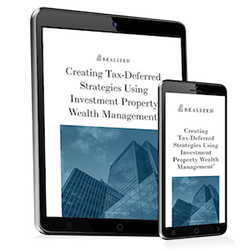
The IRS tax brackets divide income by taxable levels. Different tax rates are applied at each level. The more you make, the higher the tax rate. The tax system is also progressive. This means if you make $80,000 in a year, the entire amount is not taxed at 22%. It is divided into three tax brackets made up of 10%, 12%, and 22%.
There are a total of seven tax brackets, which we’ll cover in this article, along with the various levels of income that are applied to each bracket.
How Is Income Taxed?
Taxing $80,000 at 22% would create a $17,600 tax bill. However, the tax bill would be much lower because the US tax system is progressive. Also, various deductions are applied to gross income. This reduces the taxable amount.
Taxpayers may find their effective tax rate more useful than their tax bracket. The effective tax rate is the taxpayer’s average tax rate and is closer to the percentage amount of taxes paid on income.
Once a taxpayer knows their gross income, eligible expenses can be subtracted. These include 401k contributions and certain medical expenses. From there, other deductions such as the standard deduction or itemized deductions are applied, further reducing taxable income. The result is the adjusted gross income or AGI.
Once your AGI has been calculated, you can determine which tax bracket you fall into.
Tax Brackets for 2021 Filings
For the tax year 2021, there are seven tax brackets ranging from 10 percent to 37 percent. The top income level starts at $523,600 for single and heads of household filers and $628,300 for Married filing jointly.
|
Tax Rate |
Single |
Heads of Household |
Married Filing Jointly |
Married Filing Separately |
|
10% |
$0 to $9,950 |
$0 to $14,200 |
$0 to $19,900 |
$0 to $9,950 |
|
12% |
$9,951 to $40,525 |
$14,201 to $54,200 |
$19,901 to $81,050 |
$9,951 to $40,525 |
|
22% |
$40,526 to $86,375 |
$54,201 to $86,350 |
$81,051 to $172,750 |
$40,526 to $86,375 |
|
24% |
$86,376 to $164,925 |
$86,351 to $164,900 |
$172,751 to $329,850 |
$86,376 to $164,925 |
|
32% |
$164,926 to $209,425 |
$164,901 to $209,400 |
$329,851 to $418,850 |
$164,926 to $209,425 |
|
35% |
$209,426 to $523,600 |
$209,401 to $523,600 |
$418,851 to $628,300 |
$209,426 to $314,150 |
|
37% |
$523,600 or more |
$523,600 or more |
$628,300 or more |
$314,151 or more |
Tax Brackets for 2022 Filings
For the 2022 tax year, there are still seven brackets. Tax rates have not changed. All brackets have been adjusted up for inflation.
|
Tax Rate |
Single |
Heads of Household |
Married Filing Jointly |
Married Filing Separately |
|
10% |
$0 to $10,275 |
$0 to $14,650 |
$0 to $20,550 |
$0 to $10,275 |
|
12% |
$10,276 to $41,775 |
$14,651 to $55,900 |
$20,551 to $83,550 |
$10,276 to $41,775 |
|
22% |
$41,776 to $89,075 |
$55,901 to $89,050 |
$83,551 to $178,150 |
$41,776 to $89,075 |
|
24% |
$89,076 to $170,050 |
$89,051 to $170,050 |
$178,151 to $340,100 |
$89,076 to $170,050 |
|
32% |
$170,051 to $215,950 |
$170,051 to $215,950 |
$340,101 to $431,900 |
$170,051 to $215,950 |
|
35% |
$215,951 to $539,900 |
$215,951 to $539,900 |
$431,901 to $647,850 |
$215,951 to $323,925 |
|
37% |
$539,901 or more |
$539,901 or more |
$647,851 or more |
$323,926 or more |
Tax rates are not always the same from year to year. The lowest rate and highest rate also change. For example, in 1944, the top tax rate was 94% for those earning over $200,000 ($2.5 million in today’s dollars).
Taxpayers can begin filing on January 24 and have until April 18 to complete their filings. Filing an extension moves the deadline out to October 17.
This material is for general information and educational purposes only. Information is based on data gathered from what we believe are reliable sources. It is not guaranteed as to accuracy, does not purport to be complete and is not intended to be used as a primary basis for investment decisions. Realized does not provide tax or legal advice. This material is not a substitute for seeking the advice of a qualified professional for your individual situation. Examples shown are hypothetical and for illustrative purposes only.



